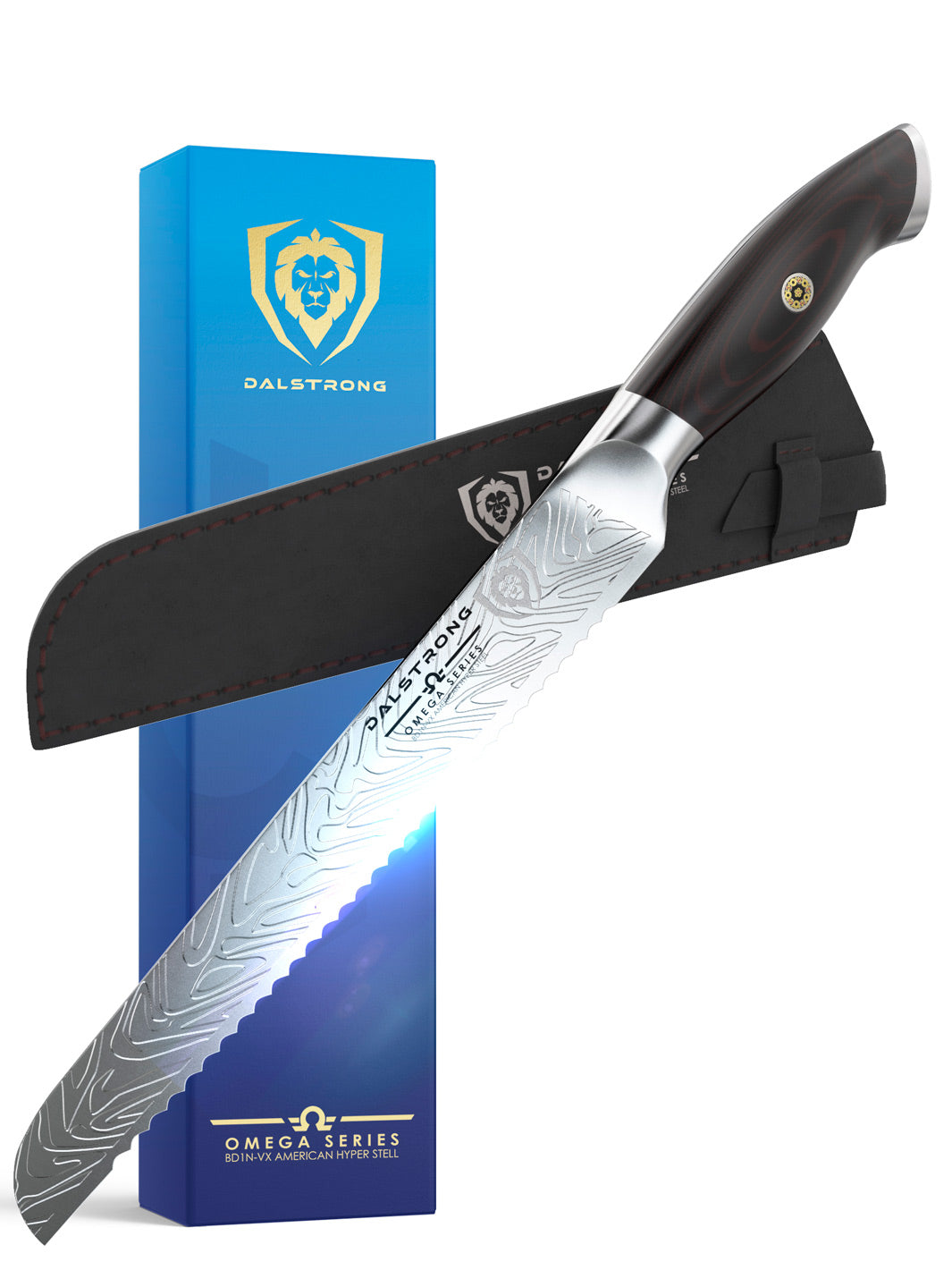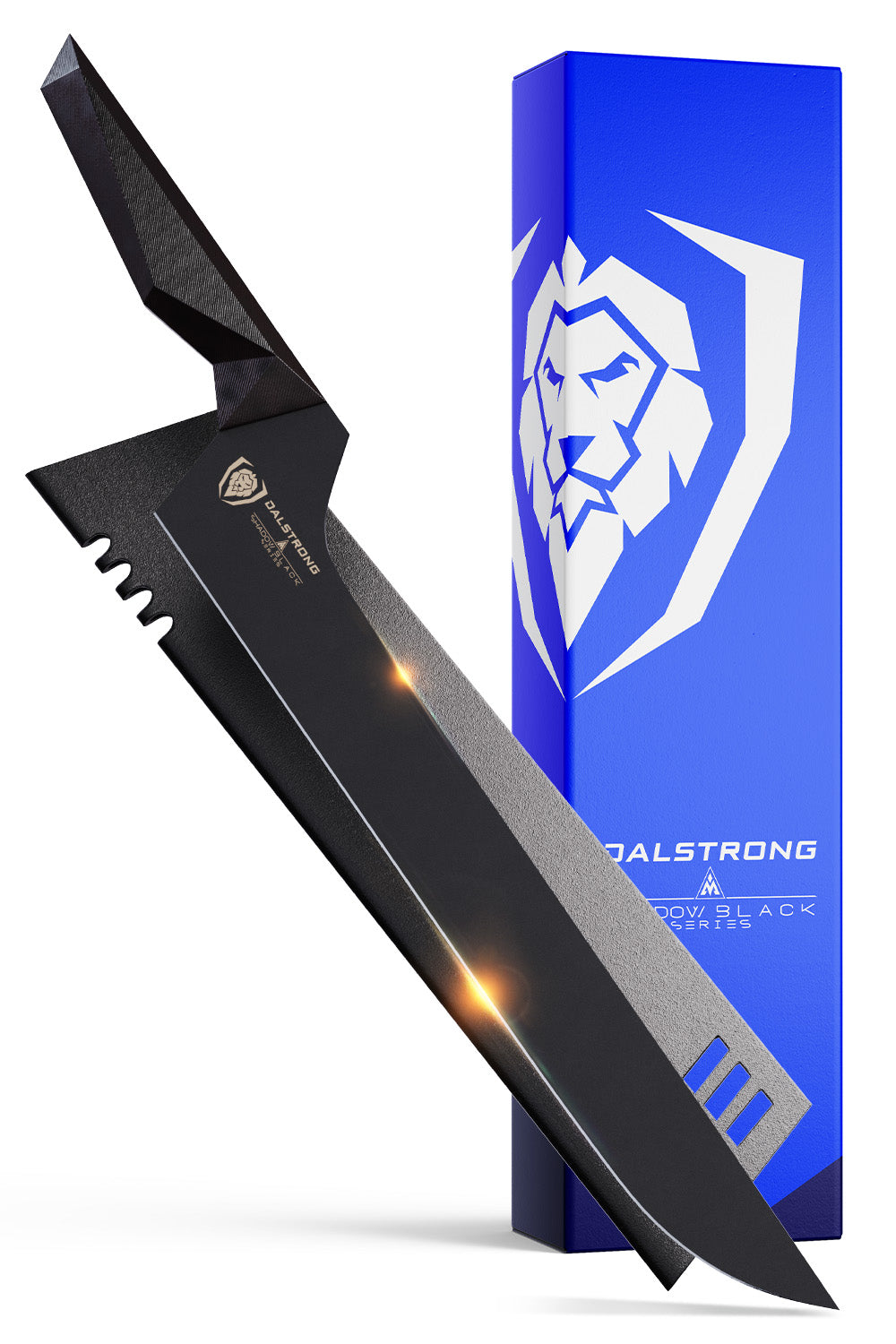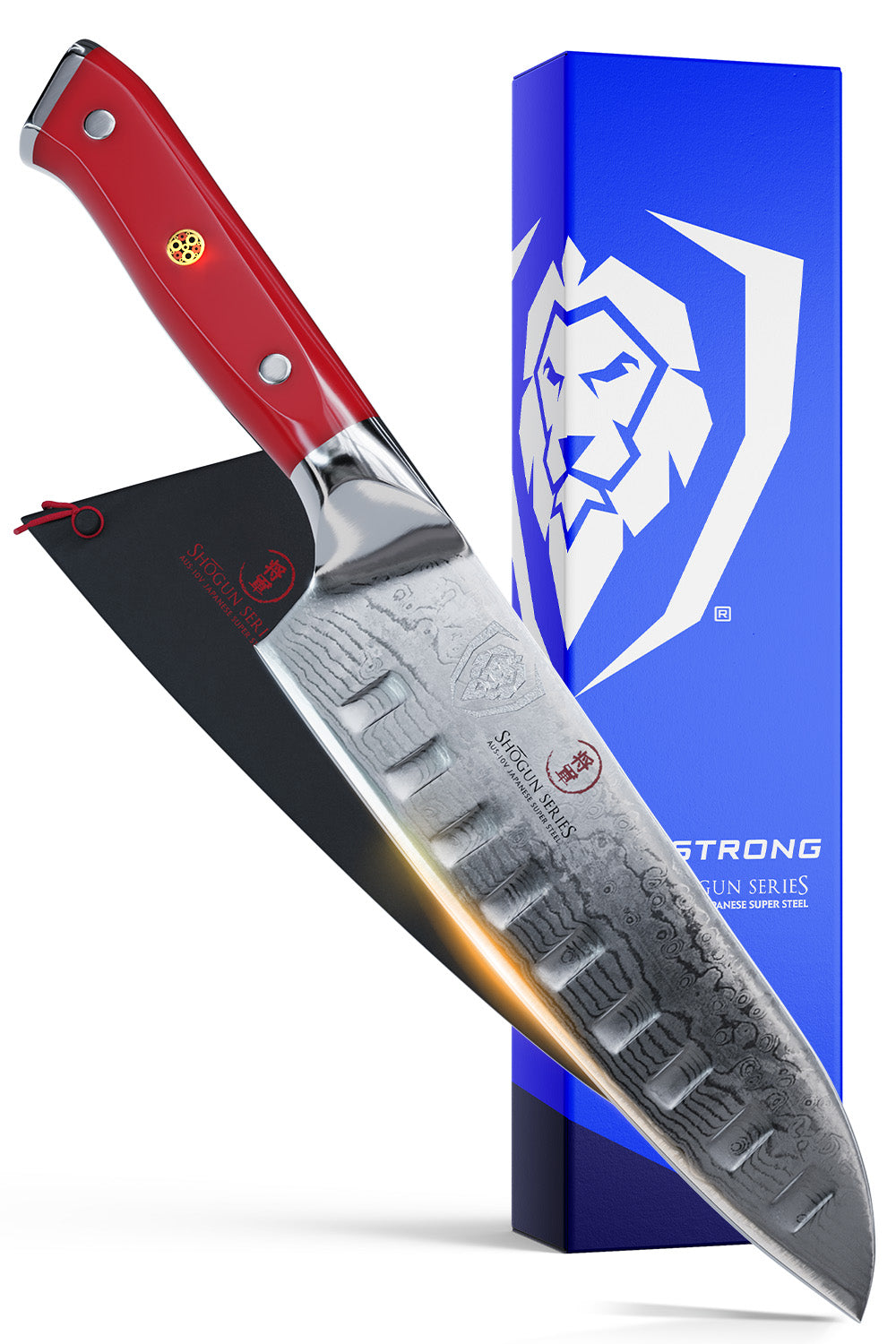Quick Overview: How To Cut Cantaloupe
- Wash the cantaloupe under running water and pat it dry.
- Place the fruit on a chopping board and use a sharp knife to cut the top and bottom portions.
- Make a ‘C’ cut from the flat base and cut it into two halves.
- Cut each half into two more wedges.
- Peel the skin of the fruit.
- Hold 2 wedges together at a time and cut at a perpendicular angle.
- Continue to cut until you have cantaloupe cubes.
Cantaloupe is one of the juiciest, sweetest, and easiest fruits to devour on any day. Not only is this fruit easy to cut up and slice, but is an infamous addition to many popular recipes. This fruit is perfect for charcuterie boards, fruit trays, fruit salads, and on the fourth of July at your very own grill station.
So, as long as you have a sharp knife handy, you’re good to go. Generally, a paring knife, serrated knife, or chef’s knife are best suited for this task – This fruit is going to allow you to channel your inner chef and insanely good knife skills, so let’s dive right into it.
1. How To Choose A Good Cantaloupe

The orange flesh of a cantaloupe is super versatile. It makes for a delightful bite of chocolate-covered goodies, a super quick breakfast, and your own to-go fruit bowl of bite sized pieces of cantaloupe if you’re a busy bee like I am.
But, if you’re looking for a good cantaloupe, there are chances that you pick the wrong fruit – Not you, though. We’re here to walk you through everything you need to know about cantaloupes.
Here’s how you would identify a good cantaloupe:
- If a cantaloupe has a lot of soft spots, you don’t want to choose that. These soft spots could mean that the fruit is over-ripe or rotting from the inside.
- You want to look for cantaloupe that is firm, but not too hard or soft, either.
- If you think you have the right one, go ahead and smell it. The melon should have a strong, sweet smell to it. The ones with no smell at all are under-ripe.
- If you intend on waiting a couple of days before you cut cantaloupe into slices, you don’t have to choose a perfectly ripe cantaloupe.
- Lastly, look for a tinge of tan on the fruit with pale green lines over it.
2. How To Peel And Cut Cantaloupe In Different Ways

Before you cut the cantaloupe, it’s crucial to peel the fruit and remove the seeds that are near the inner membranes of the fruit from within. Here’s how you would do it.
Steps To Peel Cantaloupe
- Wash your cantaloupe and pat it dry with a paper towel.
- Using sturdy cutting boards for large fruits is ideal, so don’t skip this step for a safe cutting and slicing experience.
- Slice the melon in half.
- Start by cutting off the stems. (You can identify the stem by following the spots that go along the fruit from when it was growing on the vines).
- Start by cutting the stems of the fruit on both ends.
- Once you’re done removing the skin, you can use a wide knife or spoon to discard the inner membranes of the fruit.
- Use a spoon to pick out the seeds and inner membranes of the fruit before you cut into slices or cut the cantaloupe into chunks.
Steps To Cut Cantaloupe
There are three cutting techniques to cut, chop, and slice this sweet fruit, and here is how you would go about it. All you need are sturdy cutting boards and a sharp knife. Paring knives, chef’s knives, bread knives, and serrated knives work best for clean and sharp dice.
How To Cut Cantaloupe Into Thin Slices
- Place the cantaloupe on a cutting board and cut off the top and bottom of the fruit. This is just like the rounded portion that you would cut off in tomatoes and onions.
- Place the fruit on a flat base after chopping off the stems and grab a sharp knife. A chef's knife is best suited for this task.
- With your knife cut the fruit at a downward angle. Generally, following the C-shape is the way to go.
- Remove the rind.
- Use a paring knife to remove the skin of the fruit and glide your knife along the skin to clean up the tiny fragments. You can use a spoon to scoop out any bits of soft bulbs of fruit that are over-ripe.
- Divide the fruit into four parts and tend to each part carefully and slice it into thin slices. Usually, they’re an inch thick.
- Seal in an airtight container or serve with other fruits for fruit salads or smoothies.
How To Cut Cantaloupe Into Wedges
- Place the cantaloupe on a chopping board and use a chef's knife to cut the top and bottom portions of the fruit.
- Cut the cantaloupe in half and remove the rind.
- ‘Stand the melon’ and cut it into four parts. You don’t need the fruit to be even, so don’t worry about precision.
- Once you’re done peeling the rind, lay your melon on the chopping board – The hollow side should face toward the board.
- Once you’ve cut the melon into four pieces, angle your chef’s knife at a 45º degree angle and continue cutting.
- Once you follow step 4 on both sides of the melon, you should have 8 wedges.
- This should leave you with cantaloupe wedges. If you want them to be slimmer in appearance, repeat steps 4 and 5 once more and you should be good to go.
How To Cut Cantaloupe Into Cubes
- To cut cantaloupe into cubes, start by placing the melon on a sturdy chopping board and cutting off the top and bottom portions of the fruit.
- Then, cut the fruit into four parts.
- Place the four wedges horizontally on the board, hollow side down.
- Squeeze two of the wedges together, and make perpendicular cuts.
- Repeat the step with the other wedges.
- Continue to cut until all four wedges are in cubes.
3. How To Store Cantaloupe

The best way to ensure that cut-up cantaloupe lasts you for 1-2 weeks, follow these easy steps.
- If you want the melon to last for at least a week, store it in an airtight container and refrigerate it.
- When working with asymmetrical fruits, always ensure your knives are sharp and angled.
- If you want to freeze cantaloupe pieces for fruit salads or breakfast bowls, you can place them in a brown paper bag and freeze them three days before eating them.
- You can use a melon baller to scoop perfectly-round balls of cantaloupe that can be used as a garnish on mocktails.
4. Nutritional Information About Cantaloupes

It’s no secret that fruits are packed with nutrients that can do so much for your health. Here’s everything you need to know about this versatile food.
Cantaloupes are packed with everything beneficial for your buddy except cholesterol and fat, making them a ‘superfood’. A cup of cantaloupe has about 140-150 calories and offers your body its daily dose of fiber.
The fruit has antioxidants and high amounts of vitamin C that can protect the cells in your body from damage. A bowl of melon also consists of vitamin A to keep eyes, bones, and skin healthy. Vitamin A also increases the strength of your immune system.
Enjoy a cantaloupe without hesitation, as it's packed with potassium, calcium, Folic acid, Copper, Iron, Magnesium, Phosphorus, Niacin, and Vitamin K – All of which contribute to keeping your body healthy, and most of all, maintaining your heart’s health and blood pressure.
Just keep in mind that anyone with a history of kidney disease and hyperkalemia should only indulge in small, occasional portions of this fruit as it is loaded with fiber.
Lastly, cantaloupe has a low glycemic load, which makes it such a famous breakfast choice, as it doesn’t spike your blood sugar.
5. Dalstrong’s Best Tools To Cut, Slice, and Chop Cantaloupe
1. Chef's Knife 10" Delta Wolf Series
This chef’s knife has a staggering blade length of 10 inches, making it perfect for well-versed home cooks and seasoned chefs. The precision on the blade is a striking 10 inches too. The ultra-thin blade offers a full tang for resilience against hard and large foods like melons. The added amounts of chromium give it its stain-resistant nature, making the knife easy to clean, and incredibly low in maintenance.
PROS:
- The handle is a sturdy G10 camouflage handle that can withstand slicing, chopping, and dicing.
- The sanitary build of this knife makes it perfect for busy kitchens.
- This knife can withstand harsh conditions, temperatures, and acids and chemicals without taking on damage.
- The scratch-resistant build of this knife is topped with a layer of glossy, polished finish that will surely turn heads.
CONS:
- If you prefer a minimalist and soft approach to cutlery and kitchenware, this knife could be a little flashy for your liking.
- If you’re still working around large blades, this knife could seem a smidge intimidating, but our chef blogs are here to help you work through the toughest culinary obstacles.
2. Paring Knife 3.5" Shogun Series ELITE
This paring knife from the Shogun Elite series remains a classic. Made with a Japanese AUS-10V super steel cutting core that is hardened at 62+ Rockwell, this is a knife that undoubtedly belongs on your kitchen block. The blade gets its mirror polish from the Dalstrong Diamond Detailing method which is also known to make the blade ruthlessly sharp.
PROS:
- The blade’s spine is hand-polished for a comfortable pinch grip that is engineered to perfection with a ‘zero balance’.
- The resilience of this knife is perfect to cut each half of the cantaloupe into precise halves.
- The full tang on this knife is perfect for home cooks and chefs searching for a knife with agility and robustness.
- The ergonomic handle shape gives you all the dexterity and comfort that you need.
CONS:
- You could be looking for knives with a little more grunge to them, and I couldn’t suggest the Shadow Black series enough.
- If you’re looking for a paring knife that is a little longer, check out 4-inch paring knives from Dalstrong’s collection.
3. Serrated Chef Knife 7.5" Gladiator Series | NSF Certified
Who doesn’t love a serrated knife? There is a reason this knife is a ‘must’ in every household. The serrations along the blade on these knives help you get clean and precise cuts on large fruits and vegetables. So, this 7.5” knife from the Gladiator series is perfect for cutting, slicing, and serving cantaloupe.
PROS:
- The blade on this striking serrated chef’s knife is not only wear-resistant but razor-sharp and precision-forged, too.
- Made with high carbon German ThyssenKrupp Steel that is hardened at 56+ Rockwell, this knife is low in maintenance, and incredibly easy to clean.
- The added amounts of chromium contribute to this knife’s stain-resistant nature.
- The handle is ergonomic, triple-riveted, and designed for the busiest of kitchens.
CONS:
- If you’re looking for what I call a ‘mega slicer’, a serrated knife with a longer blade might be better suited to your needs. Check out our Serrated Knives collection for more options.
- The serrations on the blade of these knives can add a couple of extra minutes to the sharpening process.
4. Teak Cutting Board Large Size | Horizontal Grain
This cutting board is designed to take on rough and strong blows when you’re working on uneven and large foods like cantaloupes, melons, or even large pieces of meat and vegetables. The Teak wood on this board is resistant to bacteria which keeps away diseases like salmonella when you’re using your chopping board.
PROS:
- Equipped with a long juice groove for a clean chopping process.
- The tight-wood grain encourages a hygienic cutting surface.
- Made with sustainably sourced Tropical Teak wood.
- Teak wood is naturally resistant to heat, cold, and moisture.
CONS:
- If you're looking for a smaller cutting board, you may check our entire Cutting board collection.
- Since this board is made with Teak wood, it will require additional oiling from time to time.
6. Frequently Asked Questions
What is the easiest way to cut a cantaloupe?
Cut off the top and bottom portions of the fruit. Then, cut the fruit into two halves and continue to make smaller slices until you have a bowl of cut-up melon pieces.
What is the easiest way to cut a melon?
The easiest way to cut a cantaloupe is with a chef’s knife, paring knife, or serrated knife. Using any of these knives will give you clean cuts of melon.
How do you cut and skin a cantaloupe?
Cut the top and bottom portions of the fruit, then slice it in half. Slice the two halves into smaller wedges. Then, use a paring knife to remove the skin. Lastly, use a spoon to scoop out any remaining seeds.
What is the best way to cut a cantaloupe into chunks?
Cut the top and bottom portions of the melon and place it hollow side down on the chopping board. Cut the fruit into 4 long wedges. Then, place the four wedges hollow side down once again, and make perpendicular cuts. Continue to do this until you have cantaloupe chunks.














